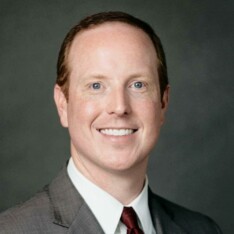
On January 1st, 22 states and 38 cities and counties raised their minimum wages, sparking some celebration for 10 million workers who get a pay hike, and many doubts for the rest.
While this is perhaps a well-intentioned policy, intentions don’t indicate a policy’s effectiveness. Many economists argue that this decision will disadvantage the people it aims to help, namely, lower-skilled workers.
Minimum wage hikes aim to make it “livable,” an increasingly frequent discussion due to government-created rampant inflation in recent years. I don’t disagree that $7.25 hourly, the federal minimum wage matched by many states, is insufficient for most to afford necessities. But helping lower-skilled workers move up the economic ladder is more complex than governments arbitrarily raising wages.
Because I want to see everyone flourish, especially the neediest among us, I’m against a minimum wage and definitely against increasing it more.
Elevating the minimum wage this drastically and suddenly will lead to widespread job losses, because employers must balance profitability with labor that costs more but adds no higher output.
The spate of layoffs by major corporations in 2023, driven by slowing sales exacerbated by decreased purchasing power, demonstrates this reality. Now, envision a scenario where these higher-paid retained workers burden employers. Rather than a boon, this often translates into more layoffs or price hikes as companies seek to maintain profitability.
The optimistic projection by the Economic Policy Institute, suggesting a $6.95 billion windfall for workers from the recent state minimum wage increases, rests on a questionable assumption that every worker will retain his job. In reality, employers may resort to cost-cutting measures to stay profitable, jeopardizing quality and output, and ultimately resulting in layoffs.
If an employer must pay someone $16 hourly, the new minimum wage in New York and California, whom will they pay?
Would it be a higher-skilled college graduate or a less-skilled worker with only a high school diploma? You can deduce which hire is the safer option. When the cost of obtaining more education or skills is higher than the cost of relying on government unemployment benefits, dependence becomes the more appealing choice over labor-force participation.
Another often-overlooked negative impact of minimum wages is decreased negotiating power. When workers with qualifications and experience who merit higher pay are confined to a predetermined minimum wage, their bargaining potential is stifled.
These labor market dynamics, however, extend beyond individual choices. The intriguing patterns in state migration rates underscore how higher minimum wages deter people from seeking better opportunities.
Look at California and New York, champions of minimum wage increases.
Both experienced some of the highest rates of outmigration in 2023. Conversely, with their comparatively lower minimum wages, Texas and Florida witnessed a substantial influx of new residents.
People vote with their feet.
The allure of better prospects, lower living costs, and increased job opportunities in states with few-or-no minimum wage hikes outweighs the appeal of higher minimum wages in other states.
States with lower minimum wages continue to increase in appeal because, contrary to popular belief, only a very small share of hourly paid workers earn minimum wage, and not for long.
Professor of Economics at UC San Diego Jeffrey Clemens’ findings reveal that most minimum-wage workers experience consistent wage growth over time. According to his research, over 12 months, about 70 percent of individuals studied initially employed at or near the minimum wage saw an improvement in their earnings, with an average wage increase of $1.39. The data suggest that the narrative surrounding the persistence of “career minimum wage workers” applies to very few people.
But even so, those low-wage jobs maintain value.
Low-wage positions, typically entry-level or part-time jobs, serve as the initial rung toward better opportunities with higher pay.
Unfortunately, governments inadvertently eliminate many of these essential entry-level jobs by advocating for higher minimum wages. This lost first rung has profound consequences, especially for vulnerable groups like young individuals, part-time workers, the unmarried, and those without a high school diploma. Such individuals rely on these low-wage positions for income and to escape the cycle of government dependency and poverty.
Employers and workers alike deserve freedom. Burdensome government regulations that hinder free-market flourishing culminate in the mandated minimum wage, which stifles opportunity rather than allowing spontaneous order to create jobs and economic growth.
The states that just increased the minimum wage will experience more problems than they’ve already created. People will continue to vote with their feet. Hopefully, leaders at federal, state, and local levels will come to grips with the best paths to help people prosper, however unpopular those paths may be.
These paths that improve productivity to demand higher market wages and increase output to supply higher-paid jobs are found in an institutional framework of free-market capitalism. Specifically for the labor market, politicians should provide universal school choice, remove government obstacles like occupational licensing and forced union dues, rein in spending to cut taxes, and reduce regulations.
In short, more government isn’t the answer to higher wages because government is the problem. Let’s not double down on government failures.





Robots are on the way. Pretty soon these minimum wage folks will be paid to be idle.